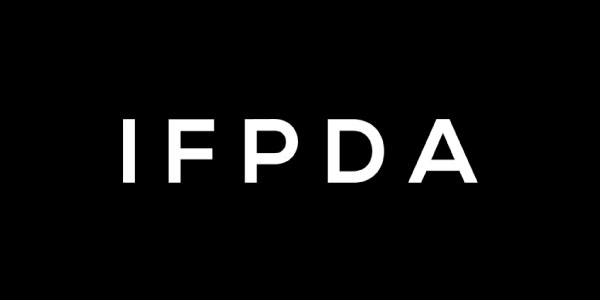KUNSTMESSE AKTUELL

TEFAF Maastricht 2024
Mar 9
–
Mar 14, 2024
Stand 497
/
AKTUELLE AusStellungen

Online Partner & Marketplaces
ist 24/7 für Sie online
Galerie PROFIL

Galerie Henze & Ketterer
In dritter Generation und seit 1946 ist die Galerie Henze & Ketterer als Familienunternehmen auf Moderne und Zeitgenössische Kunst mit Schwerpunkt deutscher Expressionismus spezialisiert. Seit Mitte der 1950er Jahre verwaltet die Galerie den Nachlass von Ernst Ludwig Kirchner, einem der bedeutendsten Künstler dieser Bewegung und Mitbegründer der Künstlervereinigung "Brücke".
So leistet die Galerie Henze & Ketterer einen Beitrag, die Werke der "Brücke", Ernst Ludwig Kirchners und des Expressionismus in der einen oder anderen Form in internationalen Museen zu zeigen.
Die klassische Moderne, Informelle Kunst (L'Art Informel) und Abstraktion nach 1945, Neue Figuration und zeitgenössische Kunst mit Malern und Bildhauern aus Italien, Spanien und Deutschland bilden die weiteren Schwerpunkte der Galerie.
Neben Ernst Ludwig Kirchner verwaltet die Galerie auch die Archive und Nachlässe von Berthold Müller-Oerlinghausen, Theo Eble und Fritz Winter. Mit den Informationen aus dem "Archiv Stuttgarter Kunstkabinett Roman Norbert Ketterer" leistet die Galerie Henze & Ketterer einen wichtigen Beitrag zur internationalen Provenienzforschung zur Kunst der Moderne.
Seit den frühen 1970er Jahren nimmt die Galerie an internationalen Kunstmessen teil, darunter Art Basel, FIAC Paris, Masterpiece London und bis heute TEFAF Maastricht, Art Cologne und Art Karlsruhe.
Die Galerie ist online über verschiedene Online Viewing Rooms (OVR) sowie mit Profilen bei artsy.net, artnet.com, ifpda.org, printed-editions.com, ocula.com, Instagram, Youtube und LinkedIn vertreten.
Die Galerie unterhält zwei Niederlassungen in der Schweiz: Wichtrach/Bern und Riehen/Basel stehen unter der Leitung von Ingeborg Henze-Ketterer, Dr. Wolfgang Henze und Dr. Alexandra Henze.
Kunstmessen 2024

NEWS


TEFAF Maastricht 2024
TEFAF Maastricht 2024
Der Akt in der Moderne & Zeitgenössischen Kunst
9 - 14 März, 2024
Stand 497
In der diesjährigen Präsentation für die TEFAF Maastricht 2024 an unserem Stand 497 zeigen wir, wie der Akt als Ausdruck innerer Stimmungen und Gefühle zu einem der beliebtesten und häufigsten Motive der deutschen Expressionisten wurde. Ein Schwerpunkt unseres Standes ist eine Gruppe von bisher nicht gezeigten großformatigen Zeichnungen Ernst Ludwig Kirchners aus dem Jahr 1914. Was im frühen 20. Jahrhundert begann, entwickelte sich in der zeitgenössischen Kunst zu einer abstrakteren Darstellung des Aktes.
Lesen Sie mehr über unser Konzept, die Künstler und Kunstwerke in unserem Online-Katalog mit einer Einführung von Alexandra Henze.



TEFAF 2024 - Highlight
Nach einem ganzen Jahrhundert wird das bedeutende Gemälde "Nackte Frau, die vom Berg steigt (Erna)" von Ernst Ludwig Kirchner zum ersten Mal seit 1922 exklusiv auf der TEFAF 2024 zu sehen sein.
Ernst Ludwig Kirchner
Vom Berge steigende nackte Frau (Erna)
1921
Öl auf Leinwand
150 x 75 cm
Gordon 0670
Das Kunstwerk wurde zuletzt 1922 im Kunstsalon Schames in Frankfurt anlässlich der großen Kirchner-Ausstellung "Schweizer Werke von E.L. Kirchner" gezeigt.
Erst 1975 entdeckte Roman Norbert Ketterer die hinter einem anderen Gemälde versteckte Leinwand. Er trennte die beiden Gemälde und ließ "Nackte Frau, die vom Berg steigt (Erna)" auf einen neuen Rahmen spannen.
Auf dem Bild ist Erna Kirchner in einer Davoser Landschaft zu sehen, als Kirchner nach einem Besuch der Tänzerin Nina Hard 1921 in Davos zum ersten Mal wieder Badeszenen in der Natur malte. Dies ist ein wichtiger Moment in Kirchners Werk, der die Davoser Zeit mit den Motiven der frühen Brücke-Jahre verbindet.

Art Karlsruhe 2024 - Impressionen
Weltkunst für Frieden & Freiheit
Von der Abstraction-Création 1930 zur abstrakten Weltsprache 1960
Die diesjährige Präsentation unter dem Titel Weltkunst für Frieden & Freiheit an unserem H1/B06 Halle 1 widmet sich Werken von der Abstraction-Création 1930 zur abstrakten Weltsprache 1960 von 8 Künstlern:
Francis Bott, Günther Gumpert, Ernst Ludwig Kirchner, Bernard Schultze, Fred Thieler, Hann Trier, Theodor Werner, Fritz Winter.
Die Präsentation soll die sich über und durch die gewaltig-gewalttätige Zäsur von Kunstverbot, von Zweitem Weltkrieg und Shoah entwickelnde und doch irgendwie immer wieder kohärente Geschichte der Kunst der Mitte des 20. Jahrhunderts anhand einiger sehr unterschiedlicher Fallbeispiele erzählen.
Die Messe wird von uns auch digital begleitet. Sie finden in der Folge wichtige Materialien und Links über die sie unsere Präsentation, die Künstler und Ihre Werke online entdecken können. Ganz besonders legen wir Ihnen den Online Viewing Room ans Herz, welcher mit Erläuterungen von Dr. Wolfgang Henze durch die präsentierte Weltkunst führt und diese profund über die Biografien der Künstler und deren Werke im Kontext der Entwicklung der abstrakten Kunst des 20 Jh. verankert.
Wir wünschen viel Freude beim Entdecken online!









GHK @ Gewusst wie: Der Experten Podcast der art KARLSRUHE
Für die 4. Staffel des art KARLSRUHE Podcasts hat WELTKUNST-Redakteur Matthias Ehlert wieder mit Menschen gesprochen, die auf der Messe vom 21.-24. Februar 2024 eine ganz besondere Rolle spielen. Die Galerie Henze & Ketterer freut sich teil der aktuellen Staffel zur ART KARLSRUHE zu sein - hören sie rein:

ART KARLSRUHE 2024 - SAVE THE DATE !
Wir freuen uns Sie jetzt zur Art Karlsruhe 2024 einzuladen, welche vom 22. bis 25. Februar 2024 stattfinden wird, mit einer Preview am 21. Februar von 14.00–19.00 Uhr.
An unserem Stand H1/B06 in Halle 1 zeigen wir eine Präsentation zum Thema:
WELTKUNST FÜR FRIEDEN & FREIHEIT
Von der Abstraction-Création 1930 zur abstrakten Weltsprache 1960
mit Ernst Ludwig Kirchner, Bernard Schultze, Fred Thieler, Fritz Winter, u.v.m.
Bild: Ernst Ludwig Kirchner, Drei Akte im Walde , 1933
ARCHIVE & NACHLässe

Ernst Ludwig Kirchner Archiv
Das Kirchner Archiv ist in den Räumlichkeiten der Galerie Henze & Ketterer in Bern/Wichtrach ansässig und umfasst eine umfangreiche Dokumentation zum Gesamtwerk Ernst Ludwig Kirchners, Protagonist des Deutschen Expressionismus und Mitbegründer der Künstlervereinigung Brücke.
Zum Aufgabenbereich des Ernst Ludwig Kirchner Archives gehören unter anderem das Abklären aller Echtheitsfragen, die Erstellung von Gutachten und Expertisen sowie die Betreuung von Publikationen und Ausstellungen über das Werk von Ernst Ludwig Kirchner.
PubliKATIONEN

STANDORTE





























